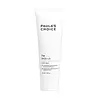What's inside
What's inside
 Key Ingredients
Key Ingredients

 Benefits
Benefits

 Concerns
Concerns

 Ingredients Side-by-side
Ingredients Side-by-side

Water
Skin ConditioningJojoba Esters
EmollientCaprylic/Capric Triglyceride
MaskingGlycerin
HumectantPEG-20 Methyl Glucose Sesquistearate
EmulsifyingMethyl Glucose Sesquistearate
EmollientTocopheryl Acetate
AntioxidantDecyl Glucoside
CleansingPPG-20 Methyl Glucose Ether
Skin ConditioningGlyceryl Stearate
EmollientStearyl Alcohol
EmollientPolyacrylamide
Sapindus Mukorossi Peel Extract
Skin ConditioningChamomilla Recutita Flower Extract
MaskingCamellia Oleifera Leaf Extract
AstringentXanthan Gum
EmulsifyingC13-14 Isoparaffin
EmollientCaprylyl Glycol
EmollientCitric Acid
BufferingDisodium EDTA
Laureth-7
EmulsifyingPhenoxyethanol
PreservativeEthylhexylglycerin
Skin ConditioningWater, Jojoba Esters, Caprylic/Capric Triglyceride, Glycerin, PEG-20 Methyl Glucose Sesquistearate, Methyl Glucose Sesquistearate, Tocopheryl Acetate, Decyl Glucoside, PPG-20 Methyl Glucose Ether, Glyceryl Stearate, Stearyl Alcohol, Polyacrylamide, Sapindus Mukorossi Peel Extract, Chamomilla Recutita Flower Extract, Camellia Oleifera Leaf Extract, Xanthan Gum, C13-14 Isoparaffin, Caprylyl Glycol, Citric Acid, Disodium EDTA, Laureth-7, Phenoxyethanol, Ethylhexylglycerin
PEG-8
HumectantSodium Bicarbonate
AbrasiveMagnesium Oxide
AbsorbentEthoxydiglycol
HumectantGlycerin
HumectantButylene Glycol
HumectantOleth-20
CleansingTrihydroxystearin
Skin ConditioningGlyceryl Stearate
EmollientPEG-100 Stearate
Paraffinum Liquidum
EmollientWater
Skin ConditioningTocopheryl Acetate
AntioxidantMelaleuca Alternifolia Leaf Oil
AntioxidantGlycine Soja Sterols
EmollientParfum
MaskingLimonene
PerfumingLinalool
PerfumingAscorbyl Palmitate
AntioxidantRetinyl Palmitate
Skin ConditioningStearyl Glycyrrhetinate
Skin ConditioningTetrahexyldecyl Ascorbate
AntioxidantCaprylic/Capric Triglyceride
MaskingLinoleic Acid
CleansingPhospholipids
Skin ConditioningPhenoxyethanol
PreservativeCI 61565
Cosmetic ColorantPEG-8, Sodium Bicarbonate, Magnesium Oxide, Ethoxydiglycol, Glycerin, Butylene Glycol, Oleth-20, Trihydroxystearin, Glyceryl Stearate, PEG-100 Stearate, Paraffinum Liquidum, Water, Tocopheryl Acetate, Melaleuca Alternifolia Leaf Oil, Glycine Soja Sterols, Parfum, Limonene, Linalool, Ascorbyl Palmitate, Retinyl Palmitate, Stearyl Glycyrrhetinate, Tetrahexyldecyl Ascorbate, Caprylic/Capric Triglyceride, Linoleic Acid, Phospholipids, Phenoxyethanol, CI 61565
 Reviews
Reviews

Ingredients Explained
These ingredients are found in both products.
Ingredients higher up in an ingredient list are typically present in a larger amount.
This ingredient is an emollient, solvent, and texture enhancer. It is considered a skin-softener by helping the skin prevent moisture loss.
It helps thicken a product's formula and makes it easier to spread by dissolving clumping compounds.
Caprylic Triglyceride is made by combining glycerin with coconut oil, forming a clear liquid.
While there is an assumption Caprylic Triglyceride can clog pores due to it being derived from coconut oil, there is no research supporting this.
Learn more about Caprylic/Capric TriglycerideGlycerin is already naturally found in your skin. It helps moisturize and protect your skin.
A study from 2016 found glycerin to be more effective as a humectant than AHAs and hyaluronic acid.
As a humectant, it helps the skin stay hydrated by pulling moisture to your skin. The low molecular weight of glycerin allows it to pull moisture into the deeper layers of your skin.
Hydrated skin improves your skin barrier; Your skin barrier helps protect against irritants and bacteria.
Glycerin has also been found to have antimicrobial and antiviral properties. Due to these properties, glycerin is often used in wound and burn treatments.
In cosmetics, glycerin is usually derived from plants such as soybean or palm. However, it can also be sourced from animals, such as tallow or animal fat.
This ingredient is organic, colorless, odorless, and non-toxic.
Glycerin is the name for this ingredient in American English. British English uses Glycerol/Glycerine.
Learn more about GlycerinGlyceryl Stearate is a mix of glycerin and stearic acid.
It is used to stabilize the mixing of water and oil ingredients. By preventing these ingredients from separating, it can help elongate shelf life. It can also help thicken the product's texture.
As an emollient, it helps soften skin and supports barrier-replenishing ingredients.
In cosmetics, Glyceryl Stearate is often made from vegetable oils or synthetically produced.
This ingredient may not be fungal-acne safe
Fun fact: The human body also creates Glyceryl Stearate naturally.
Learn more about Glyceryl StearatePhenoxyethanol is a preservative that has germicide, antimicrobial, and aromatic properties. Studies show that phenoxyethanol can prevent microbial growth. By itself, it has a scent that is similar to that of a rose.
It's often used in formulations along with Caprylyl Glycol to preserve the shelf life of products.
Tocopheryl Acetate is AKA Vitamin E. It is an antioxidant and protects your skin from free radicals. Free radicals damage the skin by breaking down collagen.
One study found using Tocopheryl Acetate with Vitamin C decreased the number of sunburned cells.
Tocopheryl Acetate is commonly found in both skincare and dietary supplements.
Learn more about Tocopheryl AcetateWater. It's the most common cosmetic ingredient of all. You'll usually see it at the top of ingredient lists, meaning that it makes up the largest part of the product.
So why is it so popular? Water most often acts as a solvent - this means that it helps dissolve other ingredients into the formulation.
You'll also recognize water as that liquid we all need to stay alive. If you see this, drink a glass of water. Stay hydrated!
Learn more about Water